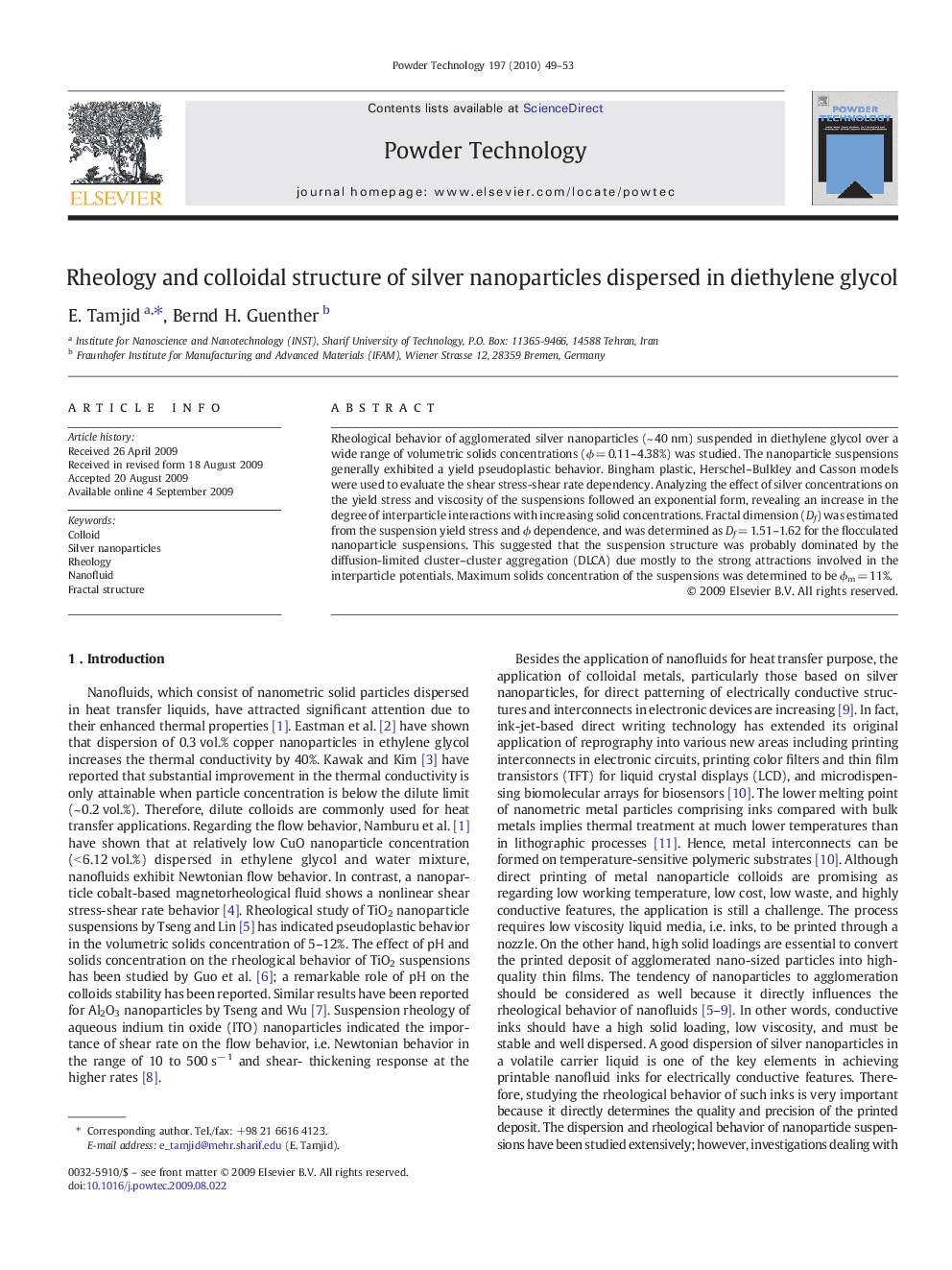| کد مقاله | کد نشریه | سال انتشار | مقاله انگلیسی | نسخه تمام متن |
|---|---|---|---|---|
| 238020 | 465737 | 2010 | 5 صفحه PDF | دانلود رایگان |

Rheological behavior of agglomerated silver nanoparticles (~ 40 nm) suspended in diethylene glycol over a wide range of volumetric solids concentrations (ϕ = 0.11–4.38%) was studied. The nanoparticle suspensions generally exhibited a yield pseudoplastic behavior. Bingham plastic, Herschel–Bulkley and Casson models were used to evaluate the shear stress-shear rate dependency. Analyzing the effect of silver concentrations on the yield stress and viscosity of the suspensions followed an exponential form, revealing an increase in the degree of interparticle interactions with increasing solid concentrations. Fractal dimension (Df) was estimated from the suspension yield stress and ϕ dependence, and was determined as Df = 1.51–1.62 for the flocculated nanoparticle suspensions. This suggested that the suspension structure was probably dominated by the diffusion-limited cluster–cluster aggregation (DLCA) due mostly to the strong attractions involved in the interparticle potentials. Maximum solids concentration of the suspensions was determined to be ϕm = 11%.
Graphical AbstractThe rheological behavior of silver nanoparticles dispersed in diethylene glycol at various concentrations was investigated and the fractal structure of the colloids was examined. A pronounced increase in the degree of interparticle interactions with increasing solid concentrations was noticed. Fractal dimension (Df) was estimated to be 1.15–1.62, suggesting that the suspension structure was probably dominated by the diffusion-limited cluster–cluster aggregation.Figure optionsDownload as PowerPoint slide
Journal: Powder Technology - Volume 197, Issues 1–2, 10 January 2010, Pages 49–53